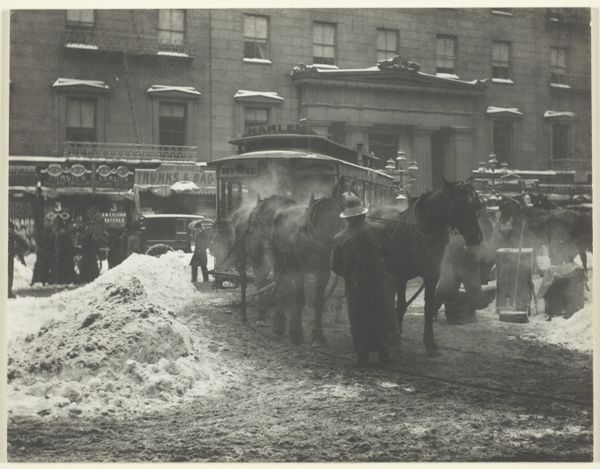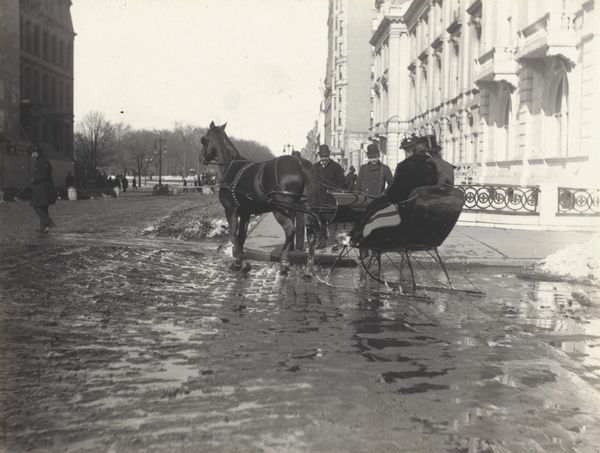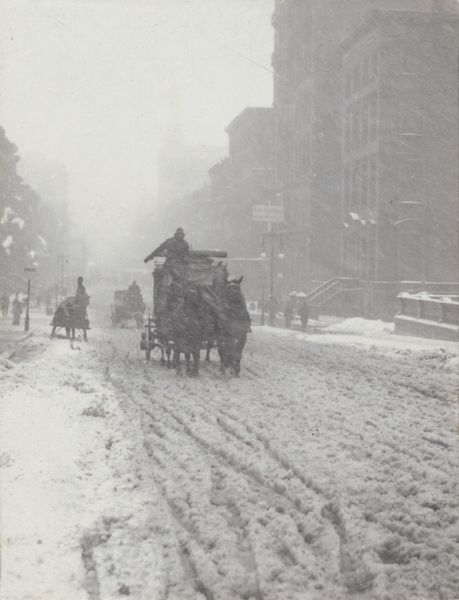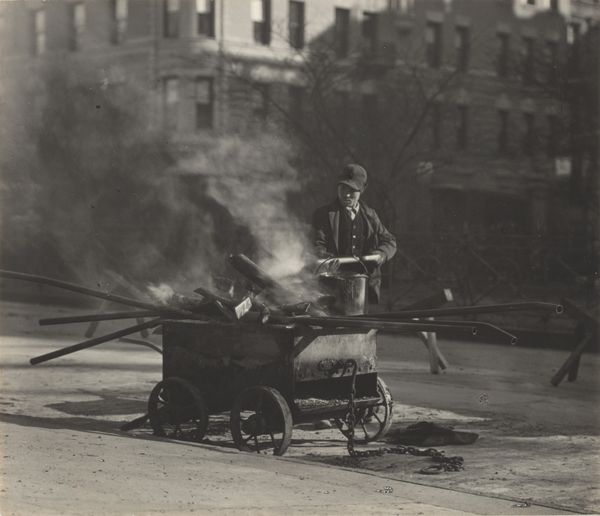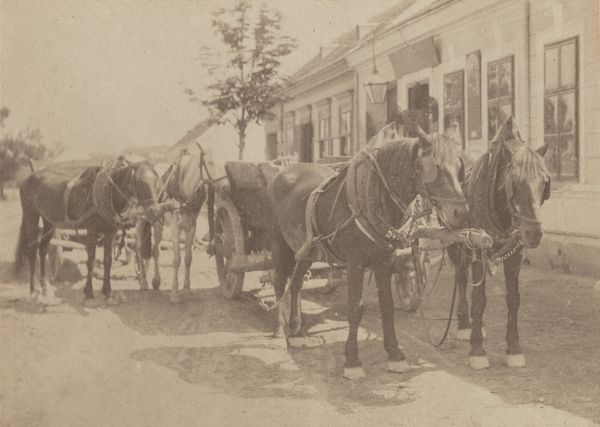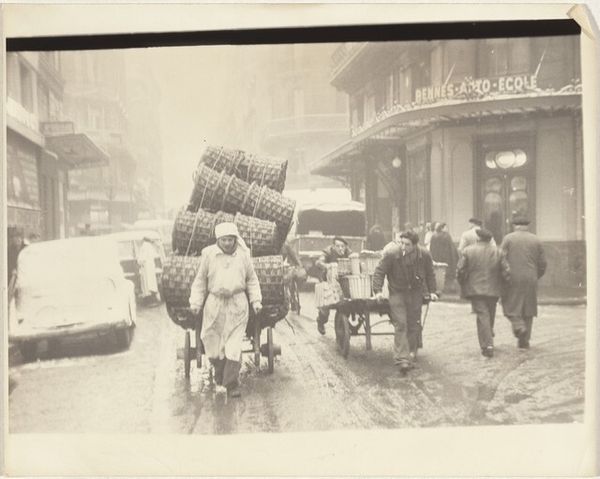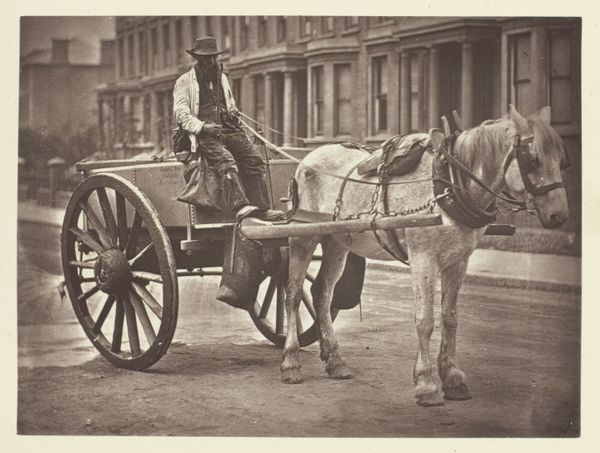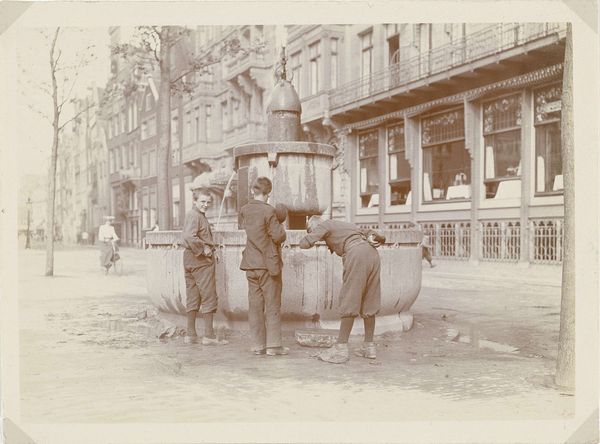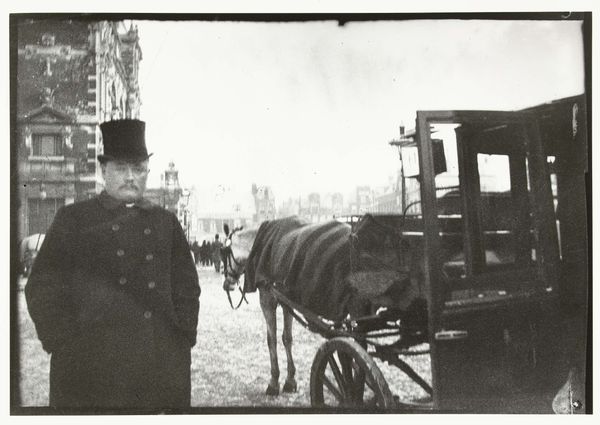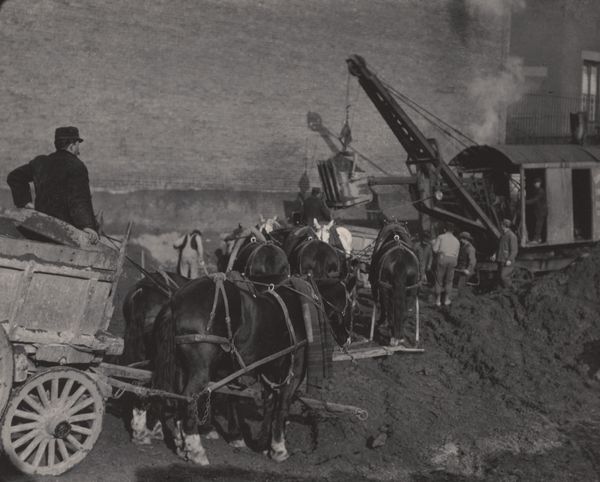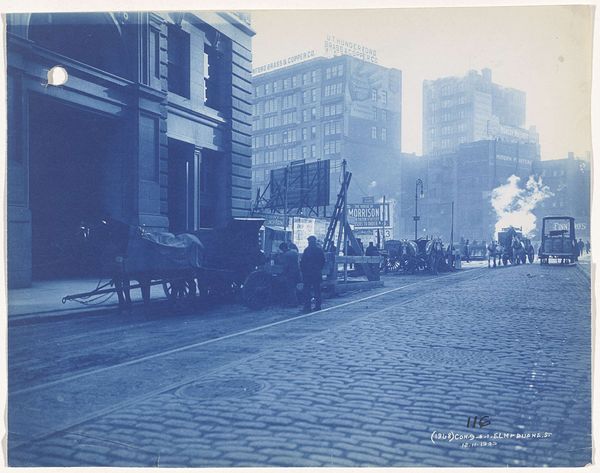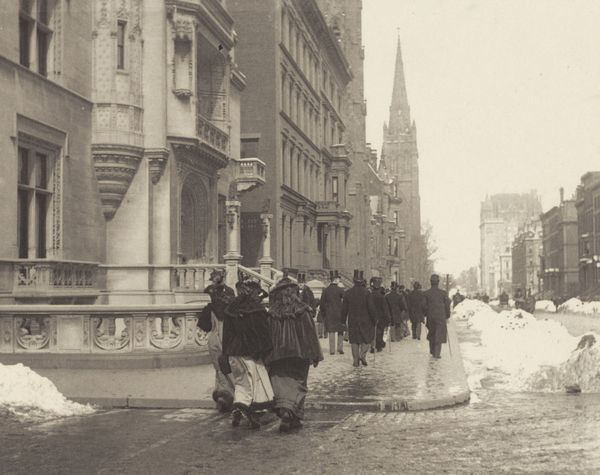
Dimensions: 25.5 × 33.5 cm (image); 28 × 39.8 cm (paper); 42 × 50.1 cm (mount)
Copyright: Public Domain
Alfred Stieglitz made this photograph, titled "The Terminal," using a photogravure process. In this image, made in the United States at the turn of the century, we see horses pulling a streetcar through the snow, framed by the grand architecture of the city. At this time, the debate around industrial progress was at its peak. Stieglitz captured urban scenes, but also ran the influential "291" gallery, introducing avant-garde European art to America. Photography, like the streetcar itself, was a symbol of modernity, yet Stieglitz often presented it with a soft, painterly aesthetic. What did this mean for the status of photography as art? Was it a progressive celebration of the modern world or a more conservative attempt to make photography acceptable to the artistic establishment? To truly understand works like this, we need to look at period magazines, gallery records, and critical debates. This helps us appreciate how social and institutional contexts shape our understanding of art.
Comments
No comments
Be the first to comment and join the conversation on the ultimate creative platform.
